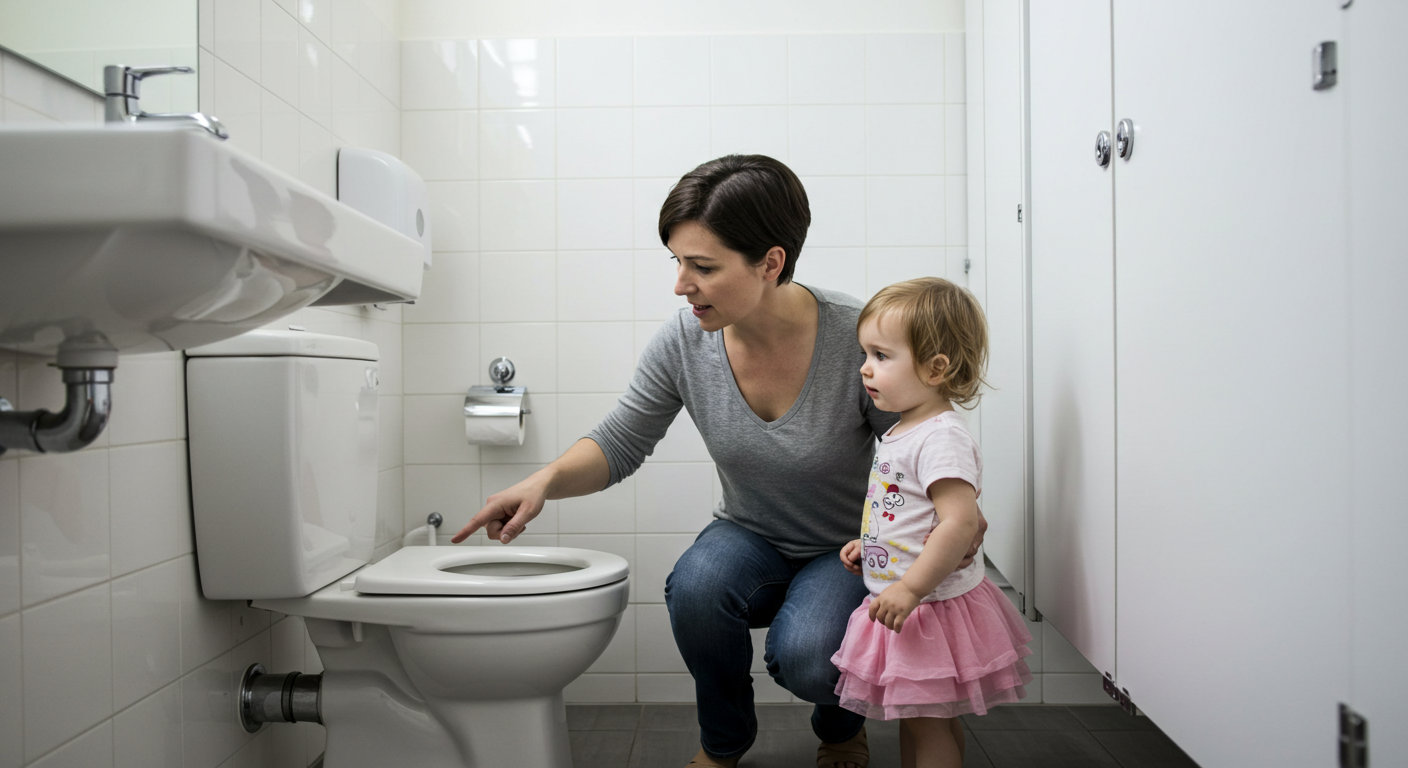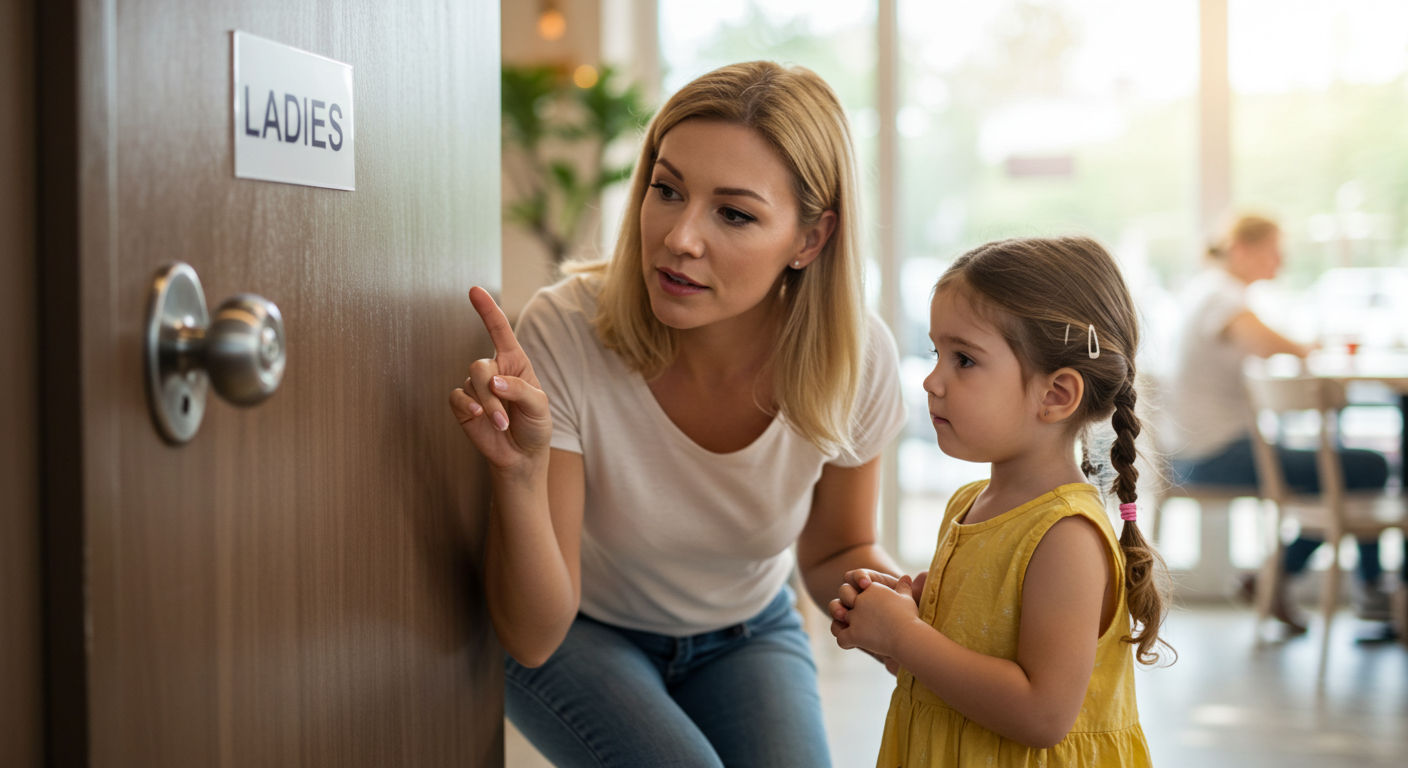Potty Training Guide in Three Days:
Public Restroom

Congratulations on reaching Day Three of the potty training guide! If your child is consistently using the toilet at home, staying dry for extended periods, and showing signs of independence, you're ready to take on one of the most important challenges—going in public places. This part of the journey can be tricky, but with the right preparation and tips on potty training in unfamiliar settings, your child will soon master the skill of using any restroom with confidence. If you missed Day one for potty training in three days, I high recommend you start there.
The Importance of Public Potty Training
While your child may be confident using the bathroom at home, it’s vital they feel equally comfortable going in unfamiliar environments. Public restrooms can be intimidating due to:
- Loud flushing toilets
- Hand dryers
- Strange smells
- Different toilet sizes
- Busy, unfamiliar surroundings
These factors can cause anxiety or resistance. That’s why this guide focuses on gradual exposure, confidence-building, and practical tools that ease the transition and reinforce the progress made during the first two days.
What You’ll Need for Day Three
- Portable potty or training seat topper
- Change of clothes and extra underwear
- Disinfectant wipes and hand sanitizer
- Small rewards or stickers
- Your child’s potty chart and dry underwear incentive system
- Plastic bag for soiled clothes
- Flushable wipes (optional for comfort and familiarity)
Having these supplies on hand allows you to be ready for both successful potty trips and unexpected accidents, ensuring every situation is handled calmly and hygienically.
Potty Training Guide in Public

1. Start Small and Familiar
Choose a location where your child feels somewhat comfortable. Ideal locations for Day Three include:
- Local library
- Bookstore
- Favorite family restaurant
- Park with restroom facilities
Avoid busy places like malls or large events during early attempts. Your goal is to ease into this transition gently and without pressure.
2. Do a Bathroom Tour First
When you arrive at your destination, make the bathroom your first stop—even if your child doesn’t need to go. Calmly introduce the restroom:
- Show them where the toilets are.
- Let them flush (if they’re not afraid of the sound).
- Practice washing hands.
You’re helping your child associate public bathrooms with routine rather than stress or discomfort.
3. Bring the Comforts of Home
Bring a small toilet seat topper that your child used during home training. This helps reduce fear of falling into large toilets and makes the experience more familiar.
If you prefer, use a portable potty kept in the car for emergencies. You can let your child use this before or after visiting the public restroom.
4. Stick to the Routine
Set a timer or watch the clock as you would at home. Try having your child sit on the potty every 20–30 minutes, especially if they’ve had fluids. Continue checking their dryness, offering praise, and using your reward system.
5. Stay Calm During Accidents
Accidents in public are completely normal and part of the learning process. If one occurs:
- Calmly clean up using your supplies.
- Remind your child, “Pee and poop go in the potty.”
- Walk them through the steps of using the restroom.
- Practice running to the potty a couple of times to reinforce the behavior.
Avoid frustration or criticism—positivity is still key to long-term success.
6. Celebrate Every Victory
Each time your child successfully uses a public restroom, celebrate it just like you did at home:
- High-five
- Dance or sing a little song
- Add a sticker to their potty chart
- Give verbal praise: “You’re such a big kid for using the potty here!”
The more normal and joyful you make the experience, the more confident your child will feel in any environment.
Additional Tips on Potty Training in Public Spaces
- Avoid disposable training pants: These reduce the sense of wetness and can undo progress. Stick with cloth training pants and a vinyl cover.
- Monitor fluid intake: Offer fluids to ensure your child has opportunities to go but don’t overdo it.
- Keep training consistent: Continue using familiar phrases and routines from Day One and Day Two.
- Be flexible: If one public outing doesn’t go well, try again tomorrow. Each trip is a learning opportunity.
- Use role-play at home: Practice “pretend” outings and public potty visits at home to build familiarity and reduce stress.
When Your Child Initiates on Their Own
When your child begins asking to use the restroom in public without being prompted, they are truly mastering this skill. Offer major praise and, if possible, a bigger reward like a small toy or a fun outing to reinforce their independence.
Final Thoughts: Potty Training in Public Takes Time
Even with a structured three-day program, some kids need extra days to feel confident in public. Keep using your potty training tools—charts, stickers, praise—and revisit familiar places until your child consistently initiates.
The key to success is preparation, patience, and positivity. Using this potty training guide for public places will make the transition smoother and support your child in becoming fully toilet independent at home and out in the world.
Great job, and don’t forget to download your free Toilet Training Certificate to celebrate your child’s progress!